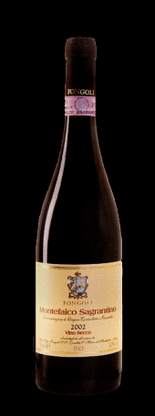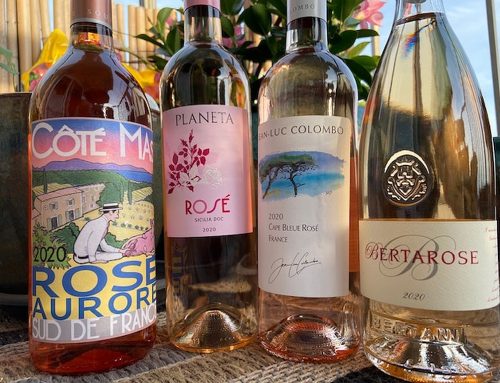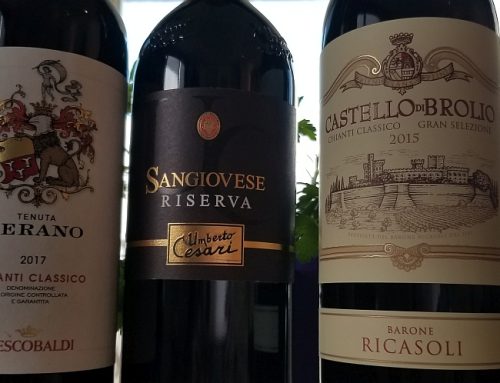Sagrantino is indigenous to the Montefalco area in Umbria. Unknown anywhere else in Italy, sagrantino was ignored by the Umbrians, who thought of it as an ancient, unappealing grape. But thanks to research at the University of Milan and determination by a few producers, sagrantino’s reputation changed for the better. Two decades ago, only five wineries made a sagrantino wine. Now there are 75 producers.In 1927, Decio Fongoli Calvani purchased the San Marco estate in Montefalco and began making wine in 1940. Five acres of sagrantino were planted in 1975, and between 1990 and 2008, the estate added another 15 acres of sagrantino. Today the Fongoli estate is a quintessential Umbrian property with 65 acres of vineyards and 20 acres of olive trees, all farmed organically.
A few weeks ago, Angelo Fongoli, the third-generation to live and work on the property, came to New York to present his family’s three wines. We began with the 2008 Montefalco Rosso. It’s a blend of 70 percent sangiovese, 15 percent sagrantino and a mix of montepulciano and merlot. Fongoli aged the wine for 18 months in large Slovenian casks, yielding a soft-textured wine with delightful accents of roses and cherries. It was a pleasure to sip this traditionally made wine.
The next glass contained the 2006 Montefalco Rosso Riserva. It differs from the non-riserva (or normale, as they say in Italy), in that Montefalco’s regulations require 30 months of aging, of which at least 1 year must be in barrel. Fongoli also changed the blend to 70 percent sangiovese, 25 percent sagrantino and the balance barbera and merlot. The result is a more pronounced red fruit aroma and flavor, bigger body, and longer finish. It gives added meaning to its Riserva designation.
Good things come in threes applied to our third glass, the 2006 Fongoli Montefalco Sagrantino. Made only from sagrantino, the wine has an eye-catching cherry color with an herbal and black cherry scent. Its full body carries tasty black plum, pomergrante and Darjeeling tea flavors across the palate. Sagrantino can be an aggressively tannic wine, but Fongoli’s use of large Slovenian oak casks for aging softened it.
By chance earlier that day, I tasted a sagrantino wine of another Montefalco producer who used new French oak barrels for aging. The new wood accentuated sagrantino’s tannins, making the wine astringent and bitter. Fongoli’s use of Slovenian oak barrels and casks ranging from five to 70 years old avoided this fault.
The 2006 Fongoli Montefalco Sagrantino is ideal with grilled steaks and lamb chops, pasta puttanesca, or lasagna with black olives, goat cheese and eggplant.
The 2006 Montefalco Sagrantino retails for approximately $37; the Rosso and Rosso Riserva are $21 and $30, respectively.








Leave A Comment